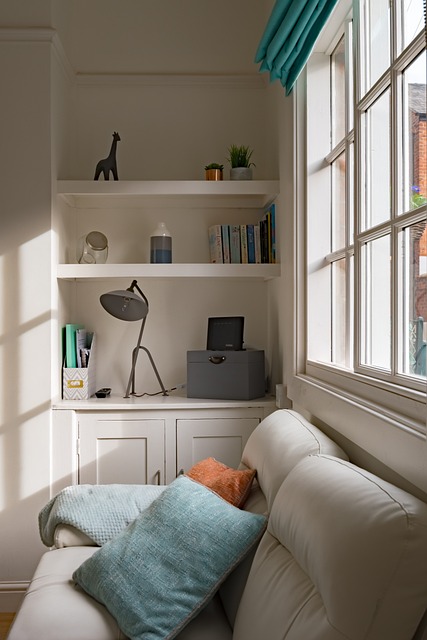The Pros and Cons of Co-Living Spaces: A Modern Solution to Urban Life
Co-living spaces are becoming popular in cities worldwide, offering a unique approach to housing by combining affordability with community living. This article explores the advantages and challenges of co-living arrangements to help readers decide if this trend fits their lifestyle.
Co-living spaces are transforming the housing landscape, especially in fast-paced urban centers where traditional rental costs are skyrocketing. By blending affordability with a built-in community, co-living appeals particularly to young professionals, remote workers, and digital nomads looking for more than just a place to sleep. But like any living arrangement, co-living comes with its own set of advantages and drawbacks. Here, we’ll dive into the benefits and limitations of co-living to help you see if this modern trend suits your lifestyle.

The Pros of Co-Living Spaces
Cost Savings
One of the most attractive aspects of co-living spaces is affordability. In major cities, renting an apartment or house solo can be prohibitively expensive. Co-living spaces split housing costs among several tenants, significantly reducing rent, utilities, and even shared amenities costs. Many co-living spaces include bills, Wi-Fi, and even housekeeping in the rent, so tenants can enjoy predictable monthly expenses and avoid hidden costs.
Built-in Community and Social Connections
Urban living can be isolating, especially for newcomers or young professionals who work long hours and find it challenging to make connections. Co-living solves this issue by fostering a sense of community among residents. In these shared spaces, residents frequently gather for organized events, from dinners and movie nights to workshops and networking opportunities. This environment helps foster genuine relationships, combatting the loneliness often experienced in big cities.
Flexibility and Convenience
Co-living arrangements are often designed for flexibility, making them ideal for those who prefer short-term or adjustable leases. This flexibility appeals to people working on temporary assignments or projects, digital nomads, or anyone looking to explore a new city without long-term housing commitments. Additionally, these spaces are usually fully furnished, allowing residents to settle in quickly without the hassle of buying or moving furniture.

Access to Premium Amenities
Some co-living spaces offer high-end amenities like coworking spaces, gyms, rooftop terraces, and wellness centers, often included in the rent. These features are usually accessible only in luxury apartments or hotels and would be financially out of reach if rented individually. Through co-living, residents gain access to an enriched living experience, elevating their lifestyle and making everyday life more enjoyable.
Eco-Friendly and Sustainable Living
Co-living spaces are often designed with sustainability in mind. By sharing common areas, utilities, and resources, co-living spaces promote an eco-friendly lifestyle by reducing waste and the overall environmental footprint. Many co-living companies prioritize energy-efficient designs, use sustainable materials, and encourage residents to participate in sustainable practices such as recycling and conserving energy.
The Cons of Co-Living Spaces
Limited Privacy
Privacy is arguably one of the biggest downsides of co-living arrangements. Despite private rooms, shared living spaces mean that residents constantly encounter one another, which can be challenging for those who value personal space. While co-living fosters a sense of community, it can also lead to discomfort or tension if boundaries are not respected or if personal lifestyles clash.
Potential for Conflict
Living with others means adjusting to different personalities, habits, and routines, which can lead to disagreements over matters like cleanliness, noise levels, or use of shared spaces. Although many co-living spaces enforce rules to ensure harmony, conflicts can still arise, especially if roommates have contrasting lifestyles or work schedules. Managing these dynamics requires good communication and, at times, compromise.
Dependence on Management

Since co-living spaces are usually managed by private companies, residents rely heavily on the management team for everything from maintenance and repairs to enforcing community rules. While a responsive management team can greatly enhance the co-living experience, poor management can lead to unresolved issues, neglected maintenance, and a decrease in overall satisfaction. Dependence on a third party for these essentials can be both convenient and risky, as it directly affects residents’ quality of life.
Less Sense of Personal Ownership
Co-living spaces, while designed to be welcoming, can lack the feeling of "home" since residents do not own the space or have as much creative freedom in decorating or customizing. For those who view their living space as an extension of their personality, the limitations on personalization can make co-living feel temporary or impersonal. The lack of ownership may also lead to a reduced sense of responsibility among residents, sometimes resulting in less care for shared spaces.
Social Overload
While many enjoy the built-in community aspect of co-living, others may find it exhausting to socialize constantly. For individuals who value quiet time or are more introverted, the pressure to participate in community events or casual socializing can be overwhelming. The expectation of social interaction, though often optional, can still feel obligatory, making co-living less attractive for those who prefer solitude or a quieter lifestyle.
Final Thoughts: Is Co-Living Right for You?
Co-living offers an innovative housing solution for modern urbanites. It provides affordability, flexibility, and access to community, making it especially appealing for those in transition or looking to meet new people. However, the shared nature of co-living may feel restrictive or challenging for individuals who prefer a high degree of independence and privacy. For those weighing the pros and cons, understanding one’s personal needs and lifestyle is essential in making the right choice.
Co-living continues to evolve, with spaces catering to various needs, from luxury accommodations to budget-friendly options. As more people consider alternative housing options, the trend of co-living is likely to expand, offering diverse ways to experience modern urban life. For some, it can be a dream solution, while for others, the lack of privacy and personal ownership might be deal-breakers. Whether co-living is the right fit depends on how willing one is to embrace community life in exchange for affordability and convenience.

